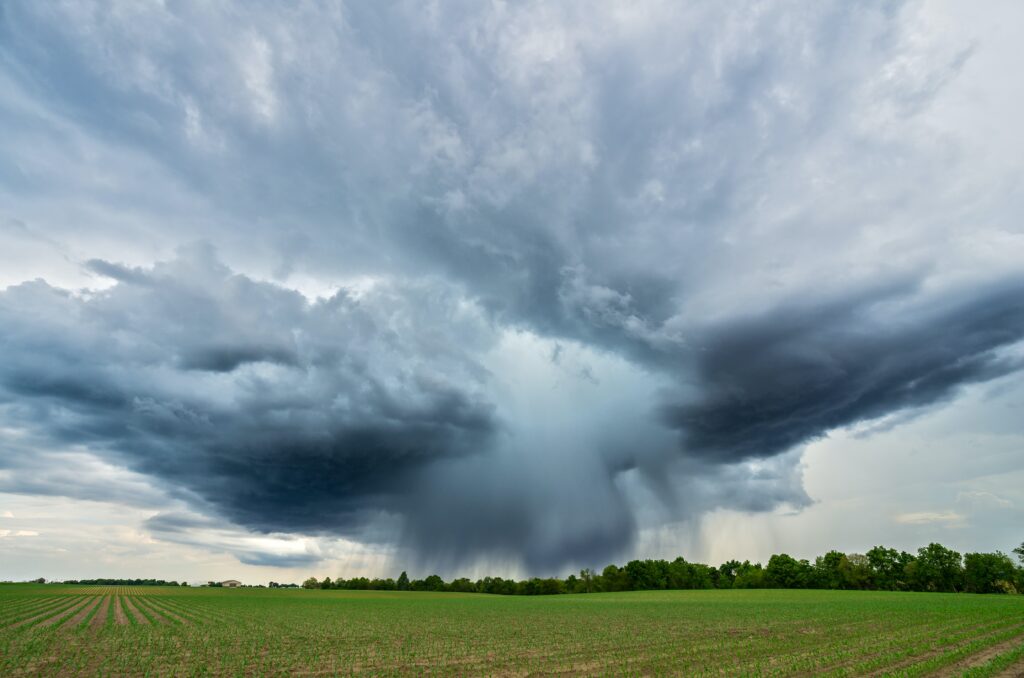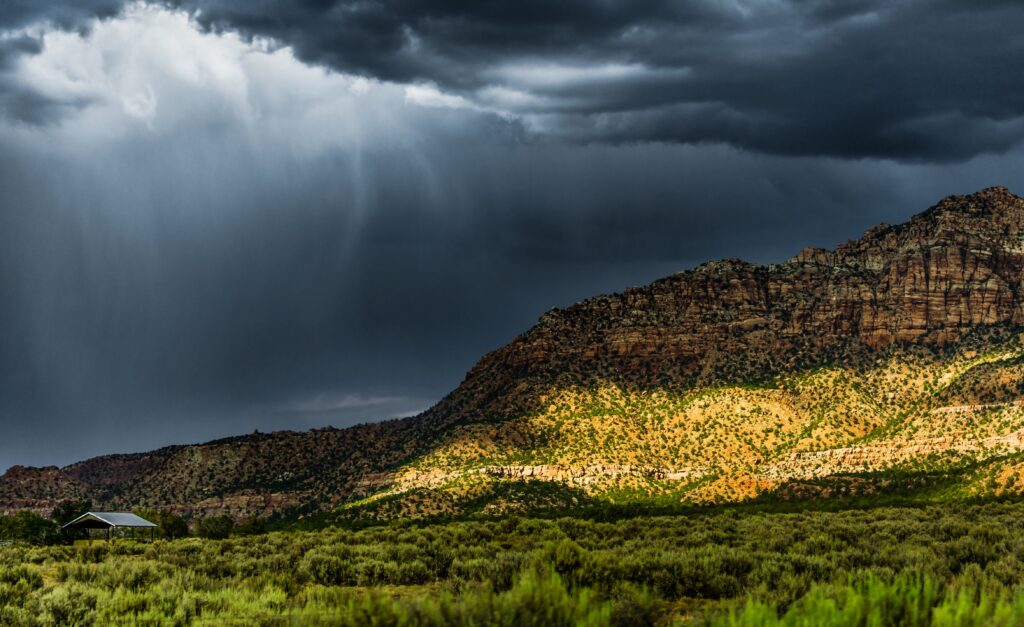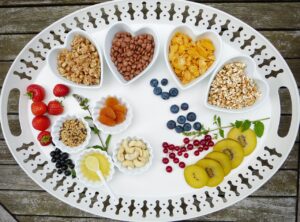Imagine standing on the shores of a vibrant coastal city, feeling the warm ocean breeze on your face. But have you ever wondered how rising sea levels could impact this idyllic scene? In this article, we will explore the fascinating ways in which coastal cities are being affected by the relentless rise in sea levels. From the threat of flooding to the disruption of ecosystems and infrastructure, get ready to uncover the far-reaching consequences of this environmental phenomenon. So, how do rising sea levels affect coastal cities? Grab a seat and join us as we embark on a journey to understand the profound implications of rising sea levels on coastal cities.
Impact on Infrastructure
Roads and bridges
Rising sea levels pose significant challenges to the infrastructure of coastal cities. As the sea levels rise, roads and bridges located in low-lying coastal areas can be directly impacted. Increased flooding can lead to erosion and damage to roadways, making them impassable and affecting transportation systems. Furthermore, bridges can be at risk of collapse due to the erosion and weakening of their support structures caused by rising water levels.
Buildings and homes
Coastal cities face the threat of severe damage to buildings and homes as sea levels rise. The increased frequency and intensity of flooding can result in rising water infiltrating these structures. Such flooding can cause structural damage, degradation of building materials, and mold growth. Additionally, repeated exposure to floodwaters can render buildings uninhabitable, displacing residents and adding to the issue of human displacement. The detrimental impact on buildings and homes can disrupt entire communities and strain local economies.
Water and sewage systems
Rising sea levels also pose significant challenges to water and sewage systems in coastal cities. Floodwaters can infiltrate drinking water supplies and sewage treatment plants, contaminating the water and posing health risks to the population. The inundation of sewage systems can also result in the release of untreated wastewater into coastal areas, further polluting the environment and compromising public health. The damages to water and sewage systems can cause widespread water shortages, sanitation issues, and increased risks of waterborne diseases.
Economic Consequences
Property values
Rising sea levels can have a direct impact on property values in coastal cities. Properties located in flood-prone areas or areas at risk of coastal erosion may experience a decline in value as potential buyers become wary of the associated risks. Homeowners may also find it challenging to secure insurance coverage for their properties, further devaluing their investments. The decrease in property values not only affects the homeowners but can have broader economic implications for the local government in terms of reduced tax revenues.
Insurance costs
As the risks of flooding and storm damage increase with rising sea levels, insurance costs for coastal properties also rise. Insurance providers often charge higher premiums and deductibles for homes and buildings located in high-risk flood zones. In some cases, insurance coverage may even be denied altogether due to the heightened risks associated with sea level rise. The burden of increased insurance costs falls on property owners, often leading to financial strain and making it more difficult for individuals and businesses to afford adequate coverage.
Loss of tourism and revenue
Coastal cities rely heavily on tourism as a source of revenue, but rising sea levels can significantly impact this industry. As coastal areas become more vulnerable to flooding and other climate-related disasters, tourists may choose to visit other destinations deemed safer. The loss of tourism revenue can have cascading effects on the local economy, affecting businesses that rely on tourist dollars, such as hotels, restaurants, and shops. Additionally, the decline in tourism can lead to job losses and economic instability for the local population.

Check Out Our Top Eco Friendly Product Picks On Amazon Here
Human Displacement
Forced migration
One of the most pressing consequences of rising sea levels is the forced migration of people residing in coastal cities. As their homes and communities become increasingly uninhabitable due to flooding and other climate-related hazards, people are forced to relocate to safer areas further inland. This leads to the displacement of large populations, often causing social upheaval and straining the resources and infrastructure of the receiving communities. The process of forced migration can be traumatic for individuals and families, uprooting them from their homes and disrupting social networks.
Disruption of livelihoods
The impact of rising sea levels extends beyond displacing people from their homes; it also disrupts livelihoods and economic stability. Coastal communities often depend on industries such as fishing, tourism, and agriculture, which are directly affected by sea level rise. The destruction of coastal habitats and declining fish populations make it increasingly difficult for fishermen to make a living. Similarly, the loss of tourist revenue and damage to agricultural land hampers the economic opportunities for those reliant on these sectors. The displacement and disruption of livelihoods can lead to economic hardships and social inequality within affected communities.
Displacement of vulnerable populations
Rising sea levels disproportionately affect vulnerable populations, including low-income communities and marginalized groups. These populations often lack the financial resources and political influence to effectively adapt and mitigate the impacts of sea level rise. As a result, they are more likely to experience higher rates of displacement and struggle to find suitable housing alternatives. Displacement can exacerbate existing social inequalities, as marginalized populations may face difficulties accessing necessary services and support systems in their new locations.
Environmental Damage
Erosion and loss of coastline
Coastal erosion is a significant environmental consequence of rising sea levels. As the sea encroaches further inland, it erodes coastlines and eats away at the land. This leads to the loss of valuable coastal ecosystems, including beaches, wetlands, and marshes, which play a vital role in protecting against storm surges and providing habitats for various species. The loss of coastline not only impacts the aesthetic appeal of coastal cities but also reduces natural barriers against flooding and storm damage.
Saltwater intrusion
Rising sea levels can result in the intrusion of saltwater into coastal areas, affecting freshwater supplies and ecosystems. As sea levels rise, saltwater can infiltrate groundwater reserves, rendering them unsuitable for human and agricultural use. This intrusion of saltwater can also harm freshwater-dependent ecosystems, leading to the loss of biodiversity and disruption of aquatic habitats. The negative consequences of saltwater intrusion extend beyond the environment, as it can threaten the availability of drinking water and agricultural productivity in coastal regions.
Habitat destruction
Coastal cities host a diverse array of ecosystems that support various plant and animal species. Rising sea levels can lead to the destruction of these habitats, displacing or endangering numerous species. Salt marshes, mangroves, and coral reefs are particularly vulnerable to the impacts of sea level rise. These ecosystems provide important breeding grounds and nurseries for marine life, contribute to coastal protection, and support the overall health of the planet. The loss of these habitats not only disrupts ecosystems and biodiversity but also undermines the long-term sustainability of coastal cities and their surrounding regions.

Public Health Risks
Waterborne diseases
Rising sea levels can intensify the risk of waterborne diseases in coastal cities. Floodwaters contaminated with sewage, chemicals, and pollutants can introduce pathogens into drinking water supplies and recreational waters. Contact with contaminated water can lead to the spread of diseases such as cholera, typhoid, and hepatitis. The combination of compromised water and sanitation systems can create a fertile breeding ground for disease-causing microorganisms, posing significant threats to public health and increasing the burden on already strained healthcare systems.
Contamination of food supplies
The impacts of rising sea levels extend beyond water-related health risks and also affect food supplies. Coastal areas often rely on agriculture and aquaculture for food production, and these sectors can be severely impacted by saltwater intrusion, flooding, and soil erosion. Salty soils, for example, negatively affect crop productivity and yield, leading to food scarcity and potential food price increases. Additionally, the contamination of seafood due to pollution and altered marine ecosystems further compromises the availability of safe and nutritious food options for coastal communities.
Increased morbidity and mortality
The combination of environmental, social, and infrastructural effects of rising sea levels can lead to increased morbidity and mortality rates within affected populations. The exacerbation of health risks due to waterborne diseases, limited access to healthcare services, and the disruption of livelihoods can have significant consequences for public health. Vulnerable populations, such as the elderly, children, and people with pre-existing health conditions, are particularly susceptible to the negative impacts of sea level rise. The strain on healthcare systems and limited resources can further compromise emergency response and medical support, worsening the overall health outcomes.
Mitigation and Adaptation Strategies
Building sea walls and flood barriers
As a means of mitigating the impacts of rising sea levels, coastal cities can implement engineering solutions such as constructing sea walls and flood barriers. These physical barriers, made of concrete, reinforced steel, or vegetation, aim to prevent or minimize the intrusion of seawater during high tides and storm events. Sea walls and flood barriers provide a degree of protection to coastal infrastructure and communities, although they must be carefully designed to consider their potential ecological impacts and long-term effectiveness.
Elevating structures
Elevating structures is another adaptation strategy to mitigate the impacts of rising sea levels. By raising buildings and homes above projected flood levels, the risk of flood damage can be significantly reduced. Elevating structures can be achieved through different methods, including pilings, stilts, or elevated platforms. This approach allows for the continued occupation and use of coastal areas while minimizing the potential economic and social disruptions caused by recurrent flooding.
Implementing climate change policies
Mitigating the impacts of rising sea levels requires a more comprehensive approach that addresses the underlying causes of climate change. Implementing climate change policies at local, national, and international levels is crucial in reducing greenhouse gas emissions and mitigating further sea level rise. Policies focused on transitioning to renewable energy sources, improving energy efficiency, and promoting sustainable practices can contribute to the long-term resilience and sustainability of coastal cities. Additionally, land-use planning and zoning regulations should consider the potential impacts of sea level rise to avoid further exacerbating the issue.

Collaborative Approaches
International agreements
Given the global nature of climate change and rising sea levels, collaborative efforts through international agreements are essential. Platforms like the United Nations Framework Convention on Climate Change (UNFCCC) and the Paris Agreement facilitate cooperation between countries to mitigate the impacts of climate change and address sea level rise. International agreements encourage knowledge sharing, financial support, and technology transfer to support vulnerable countries and assist in their efforts to adapt to sea level rise and other climate-related challenges.
Cooperation between governments
At a national and regional level, cooperation between governments is crucial in addressing the impacts of rising sea levels. Integrated coastal management plans, involving multiple governmental agencies, can help coordinate strategies for adaptation, mitigation, and disaster response. Collaboration between federal, state, and local governments ensures that policies and initiatives are coordinated and effectively implemented to protect coastal communities and infrastructure.
Sharing of resources and knowledge
The sharing of resources and knowledge among coastal cities facing similar challenges can enhance their collective resilience and adaptive capacity. Peer-to-peer knowledge exchanges, best practice sharing, and collaboration between institutions, research centers, and communities can foster innovation and expedite the implementation of effective adaptation measures. Building networks and partnerships enable coastal cities to learn from one another’s experiences and work together to find sustainable solutions to the complex problem of rising sea levels.
Predictions for the Future
Accelerating rates of sea level rise
Scientific evidence suggests that sea levels will continue to rise at an accelerated pace in the future. Due to ongoing climate change and the melting of ice caps and glaciers, the rate of sea level rise is projected to increase in the coming decades. This means that the impacts discussed above will become more pronounced and their consequences more severe. It is imperative to take proactive measures to mitigate further sea level rise and adapt to the changes that are already occurring.
More extreme weather events
As a result of climate change and rising sea levels, coastal cities can expect to experience more frequent and intense weather events, including hurricanes, storm surges, and heavy rainfall. These extreme weather events can lead to increased flooding, coastal erosion, and infrastructure damage. The occurrence of these events can disrupt daily life, strain emergency response systems, and further exacerbate the impacts on vulnerable populations. Proactive planning and investment in resilient infrastructure are essential to prepare for and minimize the risks associated with these extreme weather events.
Impacts on the global economy
The impacts of rising sea levels extend beyond the boundaries of coastal cities and have significant implications for the global economy. Coastal areas serve as major hubs for trade, industry, and tourism, and disruptions to these sectors can reverberate globally. Damage to ports and coastal infrastructure can impede international trade, affecting supply chains and increasing costs. Additionally, the loss of tourism revenue from coastal cities can impact national economies and contribute to broader economic instability. The interconnectedness of the global economy underscores the need for collaborative and proactive approaches in addressing the impacts of rising sea levels.

How Do Rising Sea Levels Affect Coastal Cities: Case Studies
Miami, Florida
Miami, Florida is one of the most vulnerable cities in the United States to the impacts of rising sea levels. Due to its low-lying topography and porous limestone geology, the city is particularly susceptible to coastal flooding and saltwater intrusion. To address these challenges, Miami has implemented various adaptation strategies, including raising roads, installing pumping systems, and updating building codes. However, the long-term viability of Miami as a coastal city remains uncertain, and more significant measures, such as raising entire neighborhoods or relocating vulnerable areas, may need to be considered in the future.
Bangladesh
Bangladesh is highly susceptible to the impacts of rising sea levels, as much of the country is situated in the low-lying Ganges-Brahmaputra Delta. Increased flooding and storm surges threaten the lives and livelihoods of millions of people in this densely populated country. In response, Bangladesh has implemented innovative adaptation strategies, including the construction of cyclone shelters, flood-resistant housing, and elevated roads. Additionally, the country has embraced nature-based solutions such as mangrove reforestation and the creation of floating agricultural platforms. These efforts demonstrate the importance of local adaptation efforts tailored to the specific challenges faced by vulnerable coastal communities.
Amsterdam, Netherlands
Amsterdam, known for its intricate system of canals, is also a city at risk from rising sea levels. The Netherlands, as a whole, has a long history of dealing with water management and has implemented extensive flood protection measures. Amsterdam’s adaptation strategies include the construction of sea walls, the use of smart infrastructure to manage water levels, and innovative urban planning solutions. The city is actively investing in climate-proofing its infrastructure and has become a global leader in water management practices. Amsterdam’s experience underscores the importance of proactive planning, the integration of water management into urban design, and the continual adaptation to changing sea levels.
How Do Rising Sea Levels Affect Coastal Cities: Conclusion
The impacts of rising sea levels on coastal cities are multifaceted and far-reaching. The interplay between environmental, economic, social, and public health consequences presents complex challenges that require comprehensive solutions. It is crucial to integrate mitigation and adaptation strategies that not only protect coastal infrastructure but also address the vulnerabilities and needs of marginalized communities. Collaborative efforts, both within and among nations, are necessary to foster knowledge sharing, resource allocation, and the implementation of sustainable policies. By prioritizing resilient development, investing in proactive measures, and addressing the underlying causes of climate change, coastal cities can navigate the challenges of rising sea levels and build a more sustainable future.




